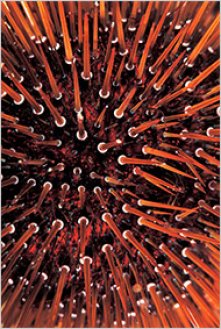
It may be prickly on the outside, but the sea urchin’s spines hide — well, if not a heart of gold, at least teeth of calcite.
The urchin’s five teeth are very strong and capable of grinding limestone, creating depressions in the rock that the sea urchin can settle in. Since limestone also consists of calcite (a form of calcium carbonate), how can the teeth grind the rock without being ground down, too?
An international team of researchers has used high-resolution X-ray analytical techniques to discover the secret. The structure and composition of the tip, particularly the orientation of the calcite crystals, is exquisitely controlled, they write in The Proceedings of the National Academy of Sciences.
The teeth consist of calcite crystals (including a small amount of magnesium) in the shapes of needles and plates, and a polycrystalline calcite matrix that contains a higher concentration of magnesium. Yurong Ma, Lia Addadi and Steve Weiner of the Weizmann Institute of Science in Israel, with Pupa Gilbert of the University of Wisconsin and other colleagues, show that the magnesium levels increase toward the tip, contributing to the hardness, and that all the elements are aligned in what they call polycrystalline blocks.
The entire tooth, the researchers report, is composed of two of these blocks, which are interleaved near the tip and may create a corrugated surface that contributes to the grinding efficiency. Toolmakers might be able to learn something from the sea urchin’s approach, the researchers say.
